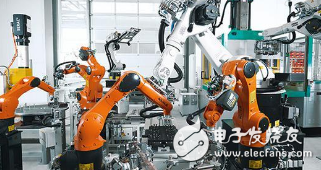With the continuous development of economy and science and technology, production automation and intelligence have become an inevitable trend of social development. The replacement of manual production by smarter production tools has become an inevitable requirement for the development of productivity, in order to meet the increasing productivity. Demand, industrial robots came into being under this premise. With the continuous development of industrial robot technology, industrial robots have begun to be widely used in various fields of social production.
In recent years, due to the human cost and demographic structure, the robot industry in Asia has grown rapidly, and China has become the world's largest robot market. According to the International Federation of Robotics (IFR), by 2020, 1.7 million new industrial robots will be applied to factories around the world.
Industrial robots are the infrastructure for flexible automation. More and more flexible robot products meet the needs of factories and help accelerate the response of enterprises to the market. The demand growth rate of industrial robots in China has been at a high level for nearly five years. In 2014, it became the world's largest industrial robot consumer market.

With the continuous maturity of robot technology, the precision of robots is getting higher and higher, and the improvement of IoT connection function makes robots become a key role in industrial digital transformation. According to IFR forecasts, the world's industrial robot inventory will reach 300,000 units by 2020, and the world robot inventory will be 182,800 units in 2016, which means that the robot market will maintain a growth rate of 14% in the next few years.
"Made in China 2025" is the action plan for China's implementation of the first decade of the strategy of manufacturing a strong country. In order to promote China's move from a manufacturing power to a manufacturing power, the State Council organized and officially released "Made in China 2025" on May 8, 2015, and made an overall deployment of China's manufacturing transformation and upgrading.
Along with the new manufacturing system based on the construction of intelligent manufacturing, the demand for industrial robots in China will increase substantially in the future. In the future, we need a large number of system integrators who understand the performance of robots and are familiar with the process of sub-sectors. This is the direction that independent brands can force and catch up.
Industry 4.0 connects real-world factories with virtual worlds, makes production more transparent through digital technology, improves production efficiency and reduces production costs, and meets the market demand for small-volume customization. This trend is becoming more and more global in manufacturing. The more important it is. Industry 4.0 involves a number of technologies, in addition to robotics, as well as artificial intelligence, 3D printing, the Internet of Things, cloud computing, big data, virtual reality, and more.
When these cutting-edge technologies break through, problems such as system complexity and data incompatibility will be overcome, and robots will be better integrated into the system network of factory automation. Cloud robots will be a new trend in the future.
Qu Daokui, director of the China Robot Industry Alliance, also said: "At present, the robot industry is facing a new environment of technological breakthroughs and upgrading. China's robot industry should develop from 1.0 to 2.0, catering to the new demand of robots in Industry 4.0. Networking will effectively connect upstream and downstream enterprises and actively play the role of robotic equipment in the manufacturing process."
At present, robots are becoming more and more simplistic. For enterprises lacking technical engineers, robots that are easy to program are what they need. It is easier for simplified robots to develop intelligent manufacturing solutions. Easy-to-use robots can be easily integrated into the production process, enabling industrial robots to be deployed in many industries to maintain efficient and flexible production.
In addition, China's rising labor costs, shortening of industrial robot cost recovery period, and industrial robot density will maintain the prosperity of China's industrial robots. China is still the most promising industrial robot country. It is expected that China's robot production capacity will increase exponentially in the next few years, but the competition will further intensify.
For enterprises, to seize the opportunity of industrial robot development, industrial robot parts need to break through in localization, and it is a breakthrough in mass production, otherwise it does not make sense. The domestic robot enterprise with robot component development, ontology manufacturing and system integration capability has a large-scale industrialization foundation and can occupy an advantage in the next competition.
Film Temperature Measurement Thermistor
Film Temperature Measurement Thermistor
Film temperature measurement NTC Thermistor is small and light as to be convenient to mounting. With the characteristics of high stability and reliability, superior electrical insulation and fast response, this type of thermistor can be used in household appliance, computer and printer etc.
Film Temperature Measurement Thermistor,Computer Sensors,Cpu Thermometer,Cpu Temp Monitor
Feyvan Electronics Technology Co., Ltd. , https://www.fv-cable-assembly.com
![<?echo $_SERVER['SERVER_NAME'];?>](/template/twentyseventeen/skin/images/header.jpg)